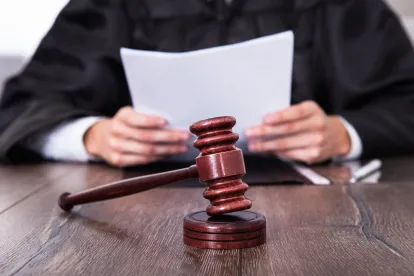On March 13, 2020, the U.S. Court of Appeals for the First Circuit, in a case of first impression, held that a copyright licensee given the unrestricted right to grant sublicenses may do so without using express language.
The case, Photographic Illustrators Corp. v. Orgill, Inc., stems from a license Photographic Illustrators Corp. (“PIC”), a provider of commercial photography services, granted to Osram Sylvania, Inc. (“Sylvania”), a leading manufacturer of lightbulbs, permitting Sylvania to use PIC’s copyrighted photographs of Sylvania’s lightbulbs. The license provided that Sylvania had a “non-exclusive, worldwide license in and to all the Images and the copyrights thereto to freely Use, sub-license Use, and permit Use, in its sole and absolute discretion, in perpetuity, anywhere in the world.” The license also contained a requirement that Sylvania and its dealers and distributors would attribute the photographs that it used to market and sell Sylvania products to the PIC photographer who took them.
After Sylvania received the license, one of its distributors, Orgill, Inc., requested PIC photographs from Sylvania for its electronic and paper catalogs. Sylvania sent the requested photographs to Orgill. However, it did not enter into a written or express agreement with Orgill. Nor did it tell Orgill that Orgill needed to abide by the attribution restriction in Sylvania’s license. Deeming this omission to violate the PIC-Sylvania license, PIC sued Orgill in the District of Massachusetts for, among other things, copyright infringement. The District Court granted Orgill summary judgment, finding that Sylvania had granted Orgill an implied sublicense.
PIC appealed to the First Circuit, arguing:
- Orgill was not granted a sublicense because copyright sublicenses must be express, not implied; and
- There were issues of fact as to whether Orgill had obtained permission to use the photographs from Sylvania, either express or implied, that precluded summary judgment.
Affirming the district court’s award of summary judgment, the First Circuit held:
- Copyright sublicenses may be implied where a licensor grants a licensee an unrestricted right to sublicense and to permit others to use the copyrighted work; and
- It was indisputable that Sylvania had granted an implied sublicense to Orgill.
As to the first finding – copyright sublicenses may be implied – the First Circuit began by noting that it was in “uncharted waters” because no circuit had addressed whether the Copyright Act required that a sublicense be express. For this reason, the court explained, it considered first whether the federal common law permitted a copyright holder to grant an implied license to a licensee. Finding that “at common law generally” a license could be proven “short of any magic words of assent,” the First Circuit then evaluated whether the case law accepted the possibility of implied copyright licenses. The court ruled that it did, observing that the circuits have applied with varying strictness a three-part test requiring that the:
- Licensee request the creation of the work;
- Licensor create and deliver the work; and
- Licensor intend that the licensee distribute the work.
With respect to the second finding – Sylvania had granted an implied sublicense to Orgill – the First Circuit ruled the evidence did not generate a jury question on whether Sylvania intended to, and did, grant Orgill a sublicense, because it would have been “effectively impossible” for Sylvania to expect its distributors to have success in selling its lightbulbs without also permitting them to use photographs of those lightbulbs, Sylvania had paid a substantial sum – approximately $3 million dollars – for the license, and Sylvania knew Orgill was using PIC’s photographs.
Orgill makes clear that, at least in the First Circuit, a copyright sublicense may be express or implied. Whether other circuits will rule similarly remains to be seen. If they do, it is possible that some circuits will adopt a more narrow approach, or possibly an entirely new standard, for when a sublicensor has impliedly granted a license.
Noting that other circuits – including the Second and Seventh Circuit – weigh more heavily the first two factors, the First Circuit explained that, in its analysis, “the touchstone for finding an implied license . . . is intent.” Accordingly, the court rejected PIC’s argument that the three-part test should be applied when assessing claims of an implied sublicense. In evaluating whether PIC intended for Sylvania to distribute its photographs, the First Circuit observed that the license PIC granted to Sylvania permitted Sylvania to “sub-license Use, and permit Use, in its sole and absolute discretion.” Explaining that PIC could have required that any sublicenses be express or in writing or, alternatively, forbidding sublicensing altogether, the court found that the “intent” factor had been satisfied.



 />i
/>i

